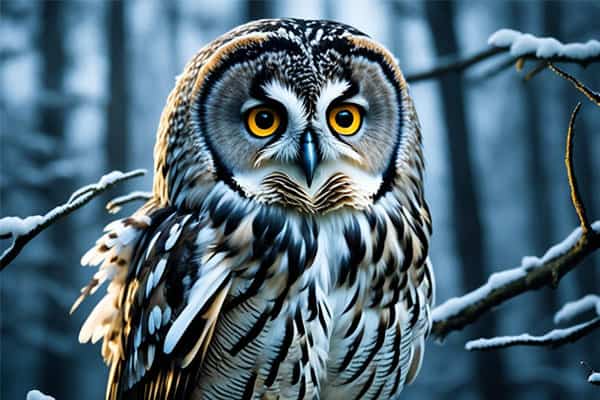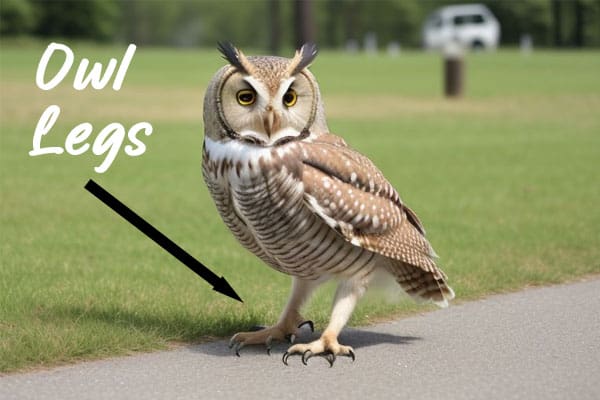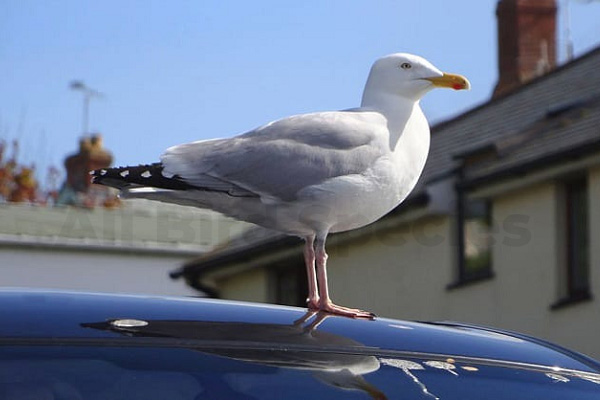Owl Legs: Everything You Need To Know
Have you ever thought about owl legs? These birds are famous for their unique looks, but their legs are amazing. They have a special structure and can do incredible things. Let’s explore why owl legs are so interesting.
Owl Leg Structure
Owls have a unique leg structure that sets them apart from other birds. Their legs are built for hunting at night and for perching on different surfaces. Let’s explore the owl leg structure, including the femur and tibiotarsus, zygodactyl feet, and feathered legs.
Femur and Tibiotarsus
Owls have a short thigh bone, called the femur, and a longer shin bone, called the tibiotarsus. This design is typical for birds. It helps them move well and balance while perching and hunting.
Zygodactyl Feet
Owls have four toes on each foot, with the first and fourth pointing backward and the second and third pointing forward. This zygodactyl setup lets owls hold onto their prey and perch on different surfaces, like tree branches and fence posts.

Feathered Legs
Owls have feathered legs to protect them from the elements and potential bites from prey. These feathers keep owls warm at night and act as a defense against the sharp claws and teeth of their prey.
The unique leg structure of owls shows how evolution has made them efficient hunters. Knowing about their owl leg structure helps us see the amazing adaptations that make owls great predators.
How Many Legs Do Owls Have?
Owls have fascinating anatomy, especially when it comes to their legs. Like most birds, they have two legs placed under their bodies. These legs are thin, feathered, and light, helping owls move quietly and efficiently in flight or on the ground.
Owls can specially rotate their legs and feet. This lets them perch and catch prey easily. Their zygodactyl feet, with two toes pointing forward and two backward, give them great balance and control.
| Owl Species | Number of Legs |
|---|---|
| Great Horned Owl | 2 |
| Snowy Owl | 2 |
| Barn Owl | 2 |
| Burrowing Owl | 2 |
| Screech Owl | 2 |
The table shows that all owl species have two legs. This is a key feature that makes these birds of prey unique.
Owls’ two legs are crucial for their hunting and flying skills. Knowing how many legs owls have helps us understand their anatomy and how they adapt to their environment.
How Long Are Owl Legs?
Owls are known for their large eyes, hooked beaks, and impressive wings. But have you ever thought about how long their legs are? Some owls have legs almost as long as their body.
Leg Length Variations
The size of an owl’s legs depends on its species and where it lives. Smaller owls, like the Elf Owl, have short legs, about 4 inches long. Larger owls, such as the Eurasian Eagle-Owl, can have legs up to 15 inches long.
Owls’ leg lengths vary based on their habitats and how they hunt. Owls living in open areas have longer legs for hunting in tall grass. Owls in forests, like the Barred Owl, have shorter legs for moving through trees.
Habitat and Hunting Methods
An owl’s leg length affects its hunting. Owls with longer legs catch prey on the ground. Those with shorter legs are great at hunting in dense areas or perching to ambush. For instance, the Great Horned Owl has long legs for hunting in open spaces.
| Owl Species | Leg Length (inches) | Habitat | Hunting Methods |
|---|---|---|---|
| Elf Owl | 4 | Deserts and woodlands | Ambush from perches |
| Barred Owl | 6-8 | Forests | Swooping from perches |
| Great Horned Owl | 8-12 | Open areas, forests | Hunting on the ground, ambushing from perches |
| Eurasian Eagle-Owl | 12-15 | Mountainous, rocky areas | Hunting on the ground, ambushing from perches |
Owls’ leg length is key to their survival and hunting success. Whether hunting in the open or from trees, their legs help them catch prey. This adaptation is vital for their survival.
Which Species Has the Longest Legs?
The Eurasian Eagle-owl has the longest owl legs. This bird lives in Europe and Asia. Its legs can grow up to 15 inches (38 centimeters) long. These long legs help the Eurasian Eagle-owl move silently and catch prey at night.
This owl is one of the biggest owl species, with a wingspan of up to 6 feet (1.8 meters). Its size and long legs make it a stunning sight. These legs help the owl hunt and survive.

Not all owls have legs as long as the Eurasian Eagle-owl’s. The length of an owl’s legs depends on its habitat, hunting style, and size. But the Eurasian Eagle-owl’s legs are the longest, showing how owls have adapted to their environments.
“The Eurasian Eagle-owl’s legs are a true marvel of nature, showcasing the incredible evolutionary adaptations that have allowed these birds to thrive in their environments.”
We’ll learn more about owl legs and their amazing traits. From the Eurasian Eagle-owl’s long legs to how leg length affects owls, there’s much to discover about these fascinating birds.
Why Are Owl Legs Long?
Owls are known for their long, thin legs. But why do they have such long legs? These legs help them hunt, fly, stay warm, and move easily.
Hunting
Owls use their strong legs and sharp talons to hunt. They can grip prey with a force of up to 500 pounds per square inch. Their long legs let them reach and catch prey from far away, making them great hunters.
Flight
Owls’ legs are short at the thigh and long at the shin. This helps them fly well and turn quickly. Their long legs also help them land quietly, which is important for hunting.
Warmth
In cold places, owls’ long legs are a big help. They can get cold without hurting their hunting or causing frostbite. This lets owls keep warm and survive in cold weather.
Maneuverability
Owls’ long legs make them very agile. They can perch, land, and move with precision. This is key for hunting and surviving in different places.
Owls’ long legs are more than just a unique feature. They are essential for hunting, flying, staying warm, and moving around. These adaptations show how amazing nature can be.
Owl Legs
Owls are fascinating creatures, and their legs are key to their survival. Their zygodactyl feet and strong bones make them top predators at night. These legs help them live in many different places.

Owls can turn their toes to catch and hold their prey. This special foot type, called zygodactyly, helps them hunt better. They can perch easily and catch their prey quickly.
Their legs are also covered in feathers, which keeps them warm and helps them fly quietly. These feathers make their flight silent, letting them sneak up on their prey.
Owls have long legs, with their shin bones often longer than their thighs. This shape lets them move quickly and change direction easily. It makes them fast and agile hunters.
Owl legs are vital for their hunting and survival. They help owls catch rodents, fish, and stay balanced on branches. By learning about owl legs, we see how these birds have adapted to their night-time world.
5 Interesting Facts About Owls
Owls are truly remarkable creatures, with adaptations that amaze us. Let’s explore five captivating facts about their extraordinary abilities.
Owls Hunt With Their Legs
Owls have a unique way of hunting. They use the long, sharp talons on their legs to catch and kill prey. They sneak up silently, then strike with lightning speed.
Their Shins Are Longer Than Their Thighs
Owls have a special leg structure. Their shins are longer than their thighs, which helps them fly and move with precision. This design lets them move easily and accurately.
Owls Can Go Fishing
Most people think of owls as hunting small rodents and birds. But, some owls, like the fishing owl, also go fishing. They catch fish with their powerful talons, showing their diverse hunting skills.
Owls Can Lock Their Toes Around Perches and Prey
Owls can lock their toes around perches and prey. This lets them hold onto their targets securely, even in tough situations or during fast chases. It shows their amazing hunting skills.
Owls Also Use Their Feet as Hands
Owls also use their feet as hands. They can grasp and move objects with their talons. This helps them handle and reposition their prey, making their hunting and eating strategies better.
These five facts show how amazing owls are. From their hunting ways to their unique legs and feet, owls inspire us with their evolution.
Why Owls Have Fluffy Legs
Owls are fascinating birds, known for their fluffy, feathered legs. Ever wondered why they have these soft, downy legs? These feathers play a big role in their survival.
The main reason owls have fluffy legs is for insulation. They are active at night, often in cold places. Their feathered legs keep them warm. The feathers trap heat, stopping them from losing too much body warmth during their hunts.
Another reason is that the feathers on their legs help them fly quietly. Owls are known for moving silently. Their fluffy legs reduce the noise of air moving over their limbs. This lets them sneak up on their prey without being heard.
- Insulation: The feathers on owls’ legs trap heat, keeping them warm during nighttime activities in cold environments.
- Noise reduction: The fluffy feathers help muffle the sound of air moving over the owls’ legs, contributing to their silent flight.
So, the next time you see an owl, think about the unique features that help them survive at night. Their fluffy legs are just one of the many things that make owls successful predators.

Do Owls Walk?
Owls are known for their amazing flying skills, but they can also walk on the ground. Owls do walk when it’s needed, even though it’s not their main way of moving.
Their legs are thin and light, and they have a special zygodactyl foot setup. This lets owls move well on the ground, whether they’re hunting or just exploring. Their feet have two toes in front and two in back, which helps them stay stable and grip the ground.
Owls aren’t the fastest or most agile walkers out there. But they can walk short distances easily. They move in small hops or steps, which helps them sneak up on their prey quietly. This is really useful when they’re hunting small animals or insects on the ground.
So, if you see an owl, watch how it walks. You might be surprised to see these beautiful birds walking around. Owls do walk, showing off their unique leg and foot features.
Do Owls Run?
Owls are not known for running. Their long, slender legs are made for flying and catching prey from a perch, not for running. They use their stealth and powerful strikes to catch their prey, not by chasing it on foot.
Owls do not typically run. Their legs are better for gripping and perching than for running. Owls are cursorial birds, meaning they are better at walking and hopping than running.
“Owls are not built for running. Their legs are designed for grasping prey and perching, not for sustained high-speed movement on the ground.”
Owls can take a few quick steps to move or change position. But they don’t run like other birds and animals. Their main way of moving is by flying. They fly quickly and quietly to get close to their prey before pouncing.
In summary, owls do not run. Their legs are made for flying, perching, and pouncing, not for running. Owls hunt using stealth, agility, and power, not speed and endurance.
Also Read Our Previous Articles
| Spiritual Meaning of Blue Jay Birds |
| Shima Enaga Bird |
| Birds With Yellow Bellies |
| Do Penguins Have Teeth? |
| What is a Group of Turkeys Called? |
Final Thoughts:
Owl legs show how these birds have adapted to be great night hunters. They have strong talons and a special foot shape. Their long, thin legs help with flying, staying warm, and moving easily. These legs are perfect for their life in the dark.
In this article, we looked at the amazing features of owl legs. We saw how owls can grab onto things with their feet and use their feet for many tasks. These birds are true experts at what they do.
As we finish learning about owl legs, we have a lot of respect for their amazing skills. Their unique legs and hunting skills show how special owls are. They amaze and inspire us with their incredible abilities.







